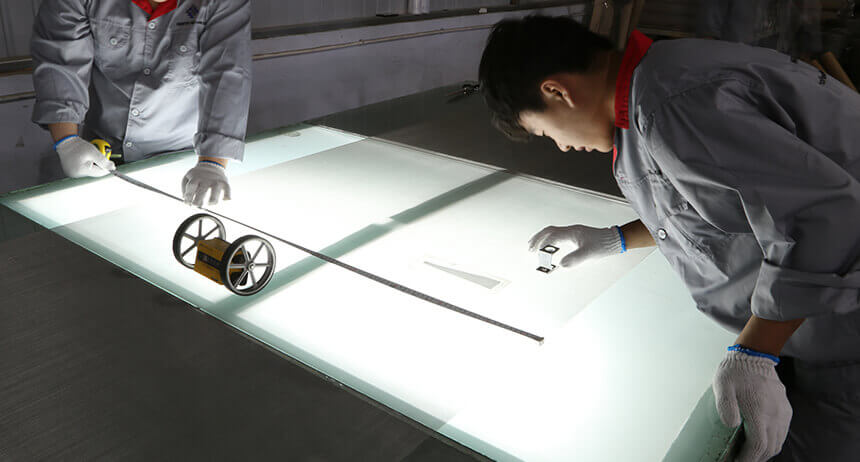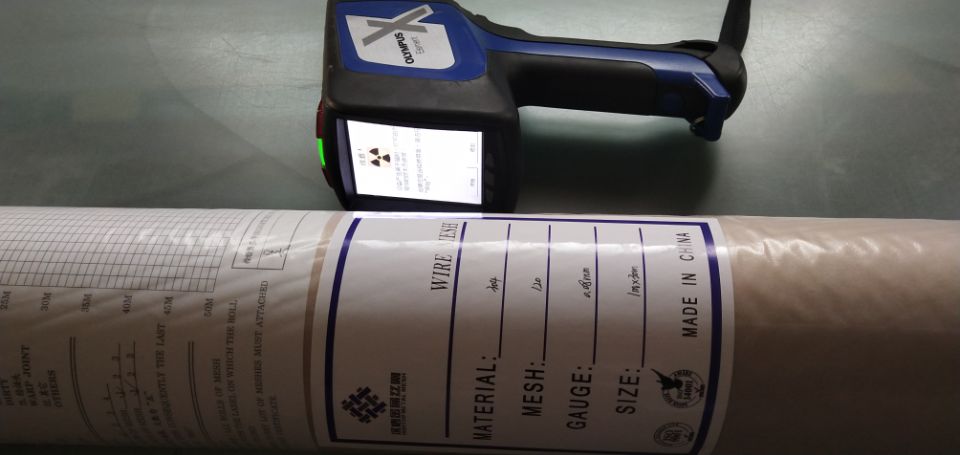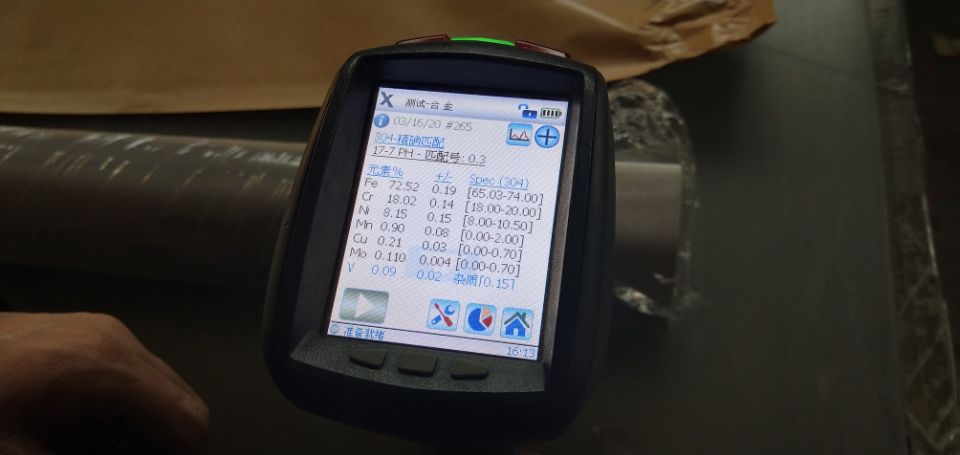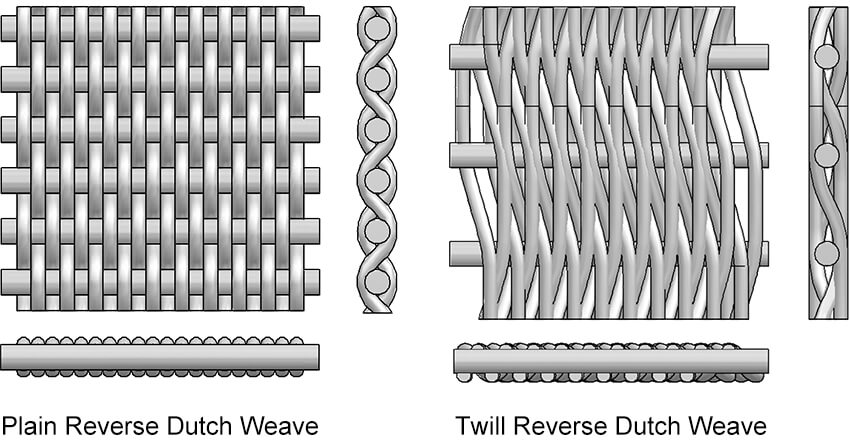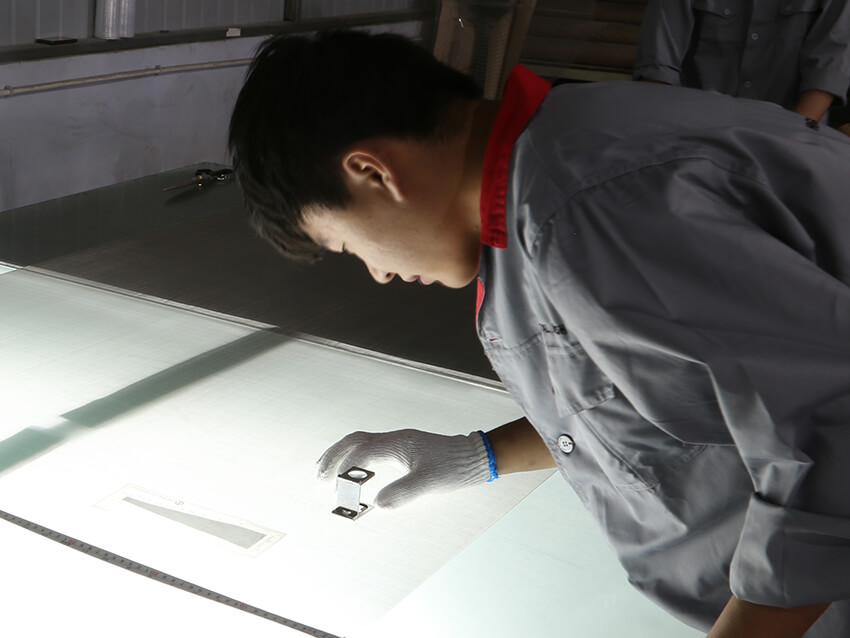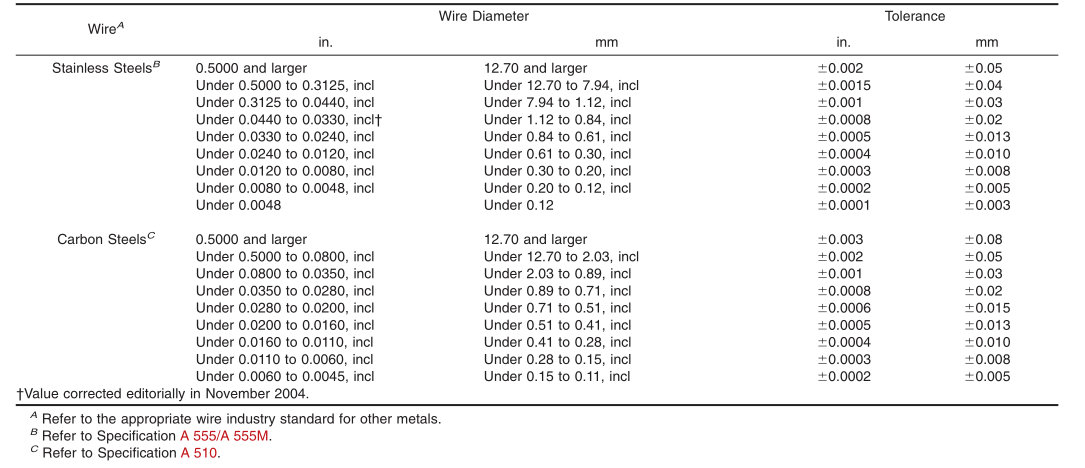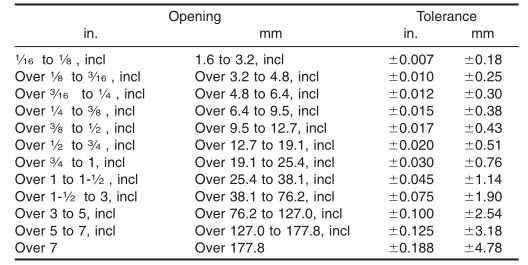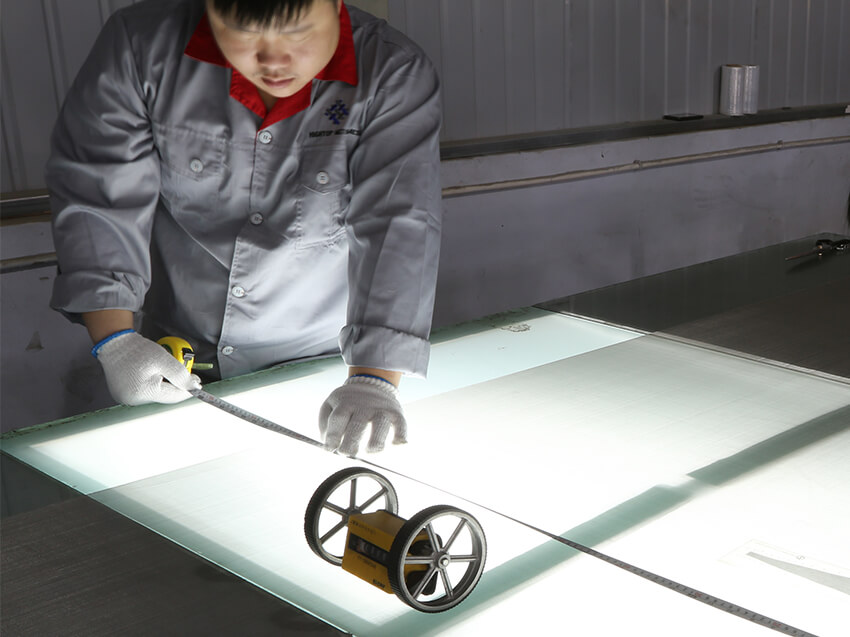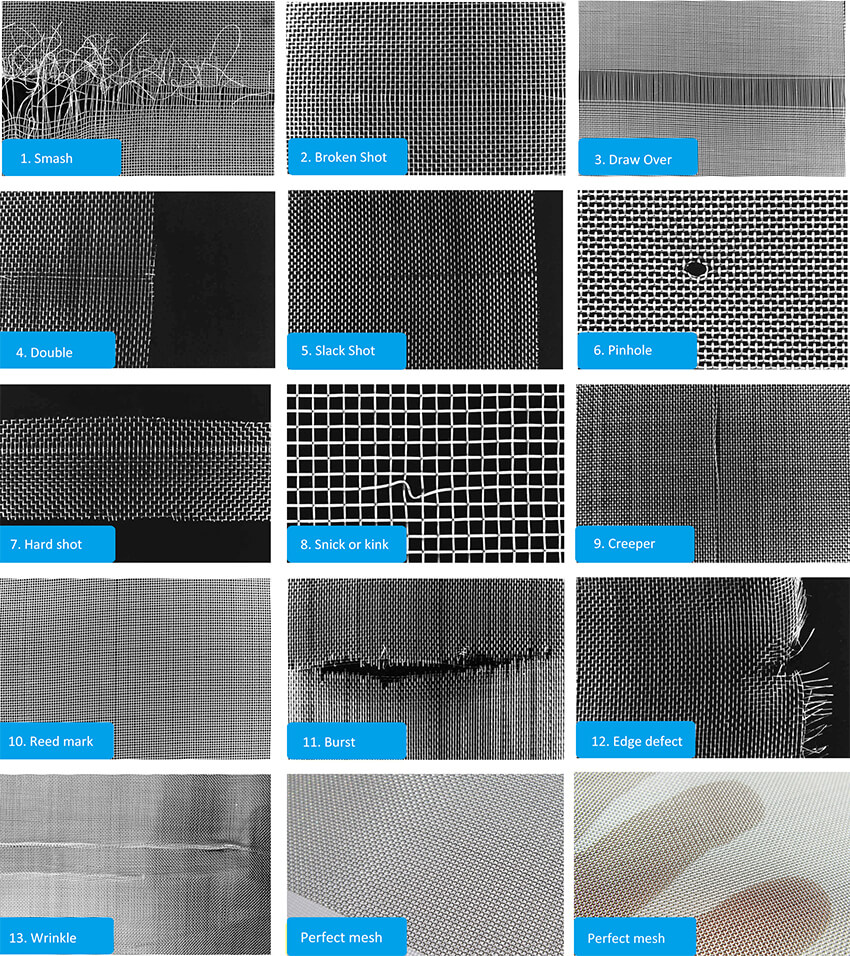How to Inspect Stainless Steel Wire Mesh
Stainless steel wire mesh can be manufactured in thousands of combinations of size and shape of the aperture, wire diameter, weave type, and material grade. The mesh is widely used for sieving solid particles and powder, liquid and gas filtration, etc. So its specification accuracy is very important for the users. How can you ensure that the wire mesh specifications are accurate when you receive the products? In this article, Hightop® Metal Mesh will share with you nine steps to verify the stainless steel wire mesh according to the ASTM E2016 standard.
Hightop® Metal Mesh is one of the most qualified professional manufacturers of woven wire mesh in China. They work certified under ISO 9001:2015, SGS, etc. In accordance with their purpose of “Hightop® Products, Hightop quality”, they inspect the woven wire mesh following the technical requirements of ASTM E2016. Each roll is inspected 100% and given an inspection certificate before dispatch. No random inspection method is adopted.
Reference Documents:
- ASTM A580/A580M Standard Specification for Stainless Steel Wire
- ASTM E2016 Standard Specification for Woven Wire Cloth
Quality Control Information:
It is the responsibility of the Hightop® quality control department to check that all requirements that were quoted and or ordered under this specification are met. Such requirements may include, but are not limited to the following:
- Type of Alloy
- Weave Type
- Mesh Count (Warp & Shute)
- Wire Diameters (Warp & Shute)
- Width & Length
- Special Requirements
Hightop® stainless steel wire mesh inspection requirements:
- All inspectors required pre-job training and can start work only after passingthe training.
- Before the inspection process, all inspectors are required to wear clean gloves to avoid contamination.
- All inspection process must be in Hightop clean inspection room
9 Steps for Your Verification of Stainless Steel Wire Mesh
Step 1. Packaging, Labeling, Roll Map Inspection Report and Certification
1.1 Packaging
Outside Packaging
–Verification of the outside packing, check for intactness.
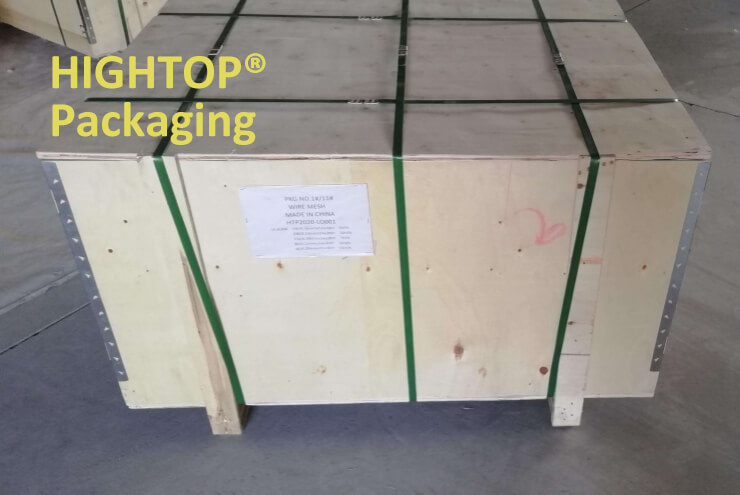
VS
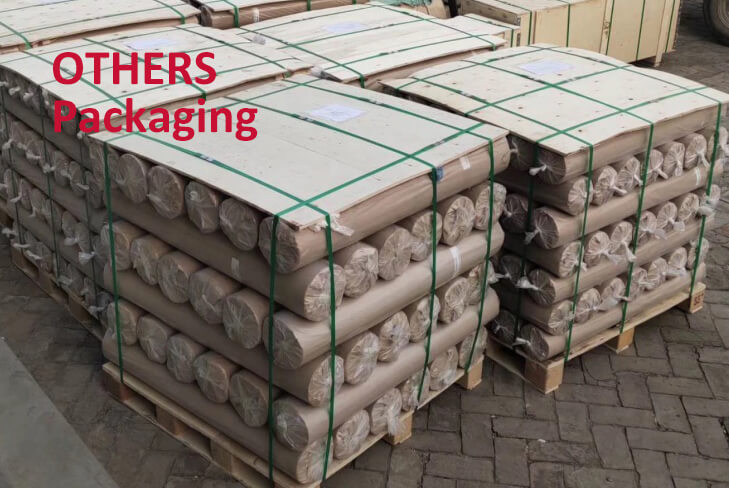
Each wooden box is stuck with a detailed shipping mark. Before you even open the box, you can find out the stainless steel mesh specifications and quantity from this mark. This makes it easy for you to confirm the arrival of goods and is convenient to find when you are going to use it.
Shipping Mark
Inner Packaging
Unboxing and verification of the inner packaging for intactness.
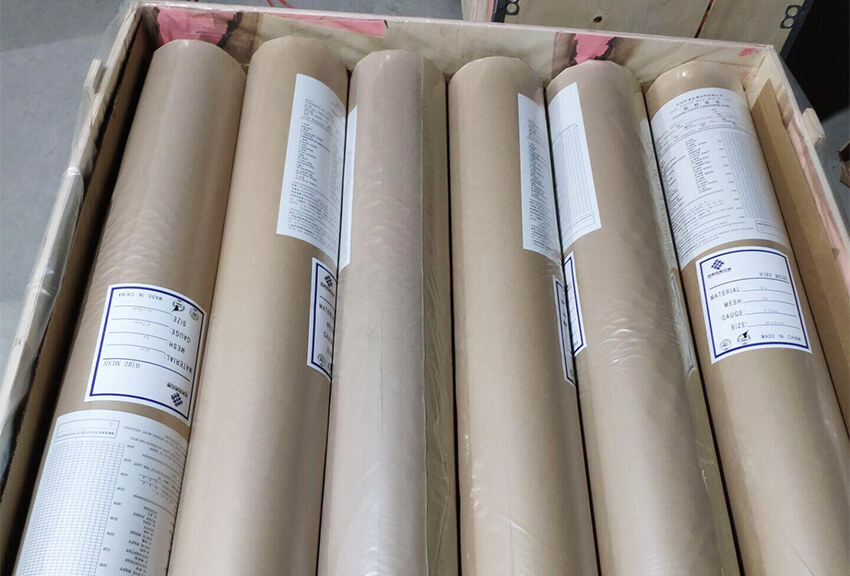
Each roll with a three-layer packaging

Waterproof
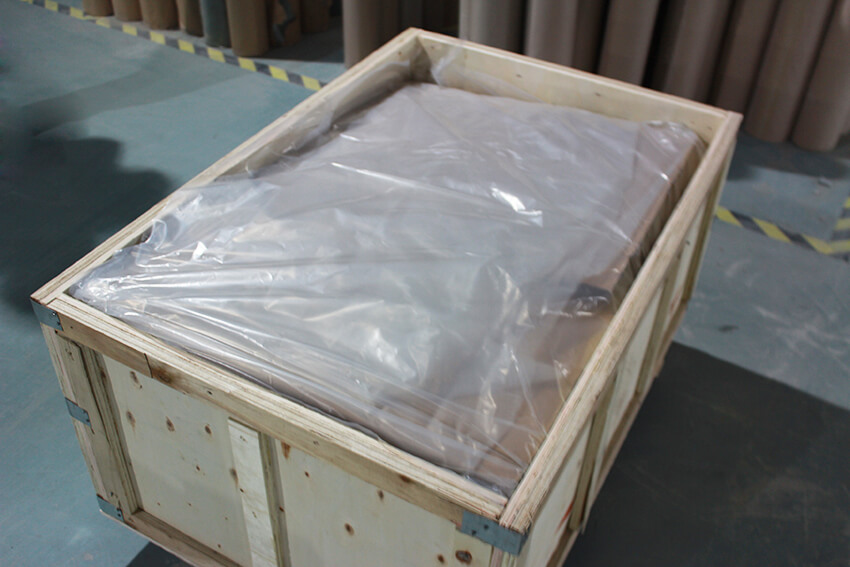
Anti-friction & Anti-collision
Check the detailed packaging method of Hightop® Metal Mesh
1.2 Labeling
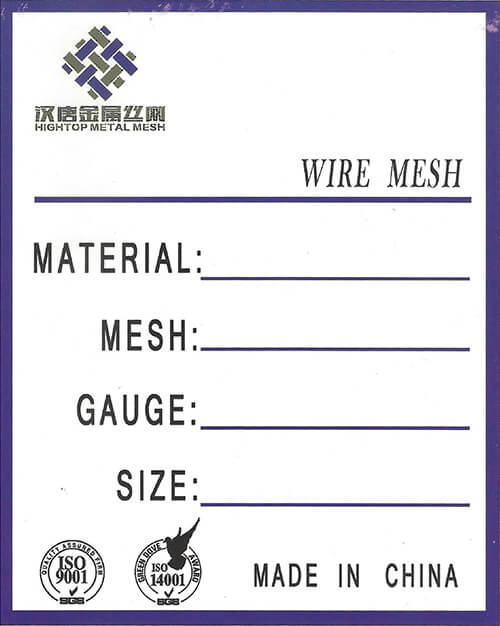
Hightop® Requirement:
- All mesh rolls must have a label on which the roll numbers are correctly stated.
- Every lot of meshes must be attached to the inspection certificate.
Hightop® labeled each roll stainless steel wire mesh with the following information:
- Hightop® Brand Logo;
- The material grade;
- The mesh or opening designation depending on the specification;
- The nominal wire diameters;
- The roll size include length and width
- Other labeling according to customer’s requirements
1.3 Roll Map Inspection Report
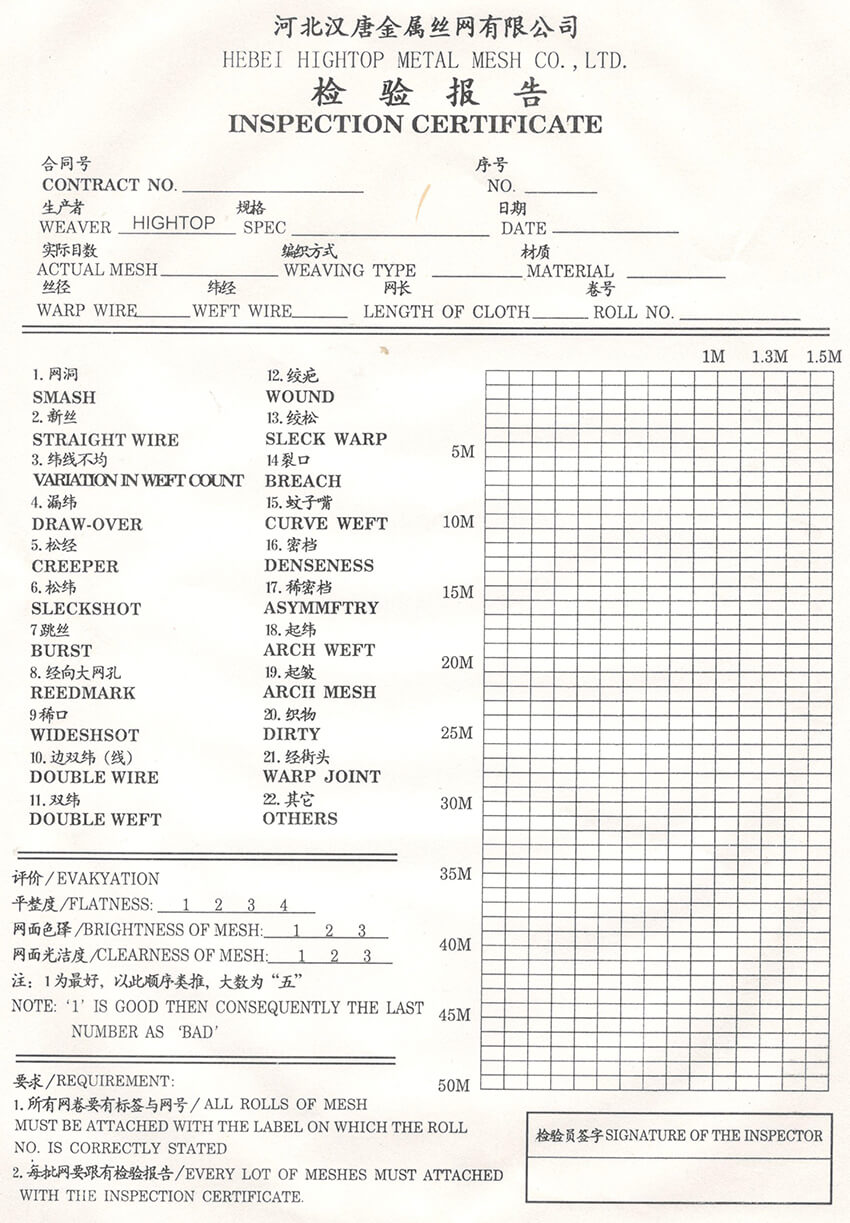
From the roll map inspection report, you can find information about each roll mesh before opening the package.
1.4 Certification
Depending on the order, you may request a test certificate containing the following information or parts:
- Chemical analysis of the stainless steel weaving wires. For the chemical analysis of the material, the wire supplier’s batch, heat, or melt number analysis is applicable.
- Mesh or opening designation, depending on the specification and the diameters of the wire used for weaving.
- For other requirements, additional tests shall be subject to agreement between the customer and the supplier.
Step 2. Analyze Type of Alloy
Verification of alloy tested by utilizing the XRF Alloy Analyzer. (Each Master Roll)
Step 3. Weave Type
Verification of the weave type according to your orders. Check for consistency.
The weave types of stainless steel wire mesh are plain weave, twill weave, Dutch weave, and reverse Dutch weave.
Click here to know more about the weave types.
Step 4. Check mesh count
Verification of mesh count. Mesh count is measured by how many threads of mesh are crossing per square inch. Each master roll should be inspected per tolerances in Table 1.
Instruments: Counting Glass (measures coarse mesh), Theodolite Density Ruler (measures fine mesh)
You can use a suitable instrument to check the mesh count of arrival rolls.
Step 5. Check wire diameter
-Verification of wire diameter under Table 2.
Test method:
Direct measurement of wire diameter. This is a conventional and accurate method for measuring the wire diameter of the stainless steel mesh.
-Instrument: Vernier Caliper (for large wire diameters), micro caliper (for small wire diameters)
Tips for you to check the wire diameter:
Due to the correlation between the mesh thickness and wire diameter, it is also possible for customers to measure the stainless steel mesh thickness instead of the wire diameter as a means of detection and comparison.
For example, for a 300 mesh stainless steel printing screen, the wire diameter is 0.035 mm, and the screen thickness is 0.08 mm. Generally, the thickness of the mesh is a little larger than twice the wire diameter. The mesh thickness is the same for the same mesh count and the same wire diameter, and the mesh thickness is relatively easy to measure because the value is larger. This is mainly used for fine stainless steel wire mesh with a small wire diameter.
Besides, the wire diameter can also be indirectly determined by measuring the weight of the stainless steel wire mesh. This involves the below weight formula for measuring the weight of the wire mesh. However, in general, the actual weight is a bit lesser than the theoretical weight. Therefore, this method is not accurate enough. But it is a more effective detection method when the first two methods cannot be implemented.
Theoretical weight: Wt/ft2 =(12 Mw (12π( Dw 2 / 4)ρ)) + (12 Ms (12π( Ds 2 / 4)ρ))
Where:
- Wt/ft 2 = the weight (lb/ft2 );
- Mw = the mesh warp (number of wires per inch);
- Ms = the mesh shute (number of wires per inch);
- D w = the diameter warp wire (decimal parts of an inch);
- D s = the diameter shute wire (decimal parts of an inch);
- ρ = the density of material (lb/in. 3 )
- π= the constant 3.1416,
which for square woven wire mesh with the same wire diameter in both the warp and shute reduces to:
Wt/ft2 = 72πpMD2
Where:
- Wt/ft2 = the weight (lb/ft2) per square foot;
- M = the mesh (number of wires per inch);
- D = the diameter wire (decimal parts of an inch).
Step 6. Check the opening size
-Verification of opening size under Table 3.
For a large opening size, use a Vernier Caliper to measure the size.
For fine mesh, you can calculate the opening size base on the below formula:
Mesh count = 25.4/(wire diameter + opening size);
So the opening size = 25.4/mesh count – wire diameter
Step 7. Width and length
Verification of the width and length by a tape measure.
Double-check your order requirements and the mesh roll size for consistency.
Step 8. Surface condition
-Verification of the mesh surface status. You can check the mesh surface whether it is clean and without dirt, oil, excess material, etc.
Step 9. Defects
– Inspect each master roll under Table 4. All defects will be marked with a red marker on Hightop® roll map inspection report. After defects inspection, the Hightop® inspector will make an evaluation for mesh flatness, brightness, and clearness. “1” is the highest rating.
Major Types of Blemishes:
- Smash
- Broken shot
- Draw over
- Double
- Slack shot
- Pinhole
- Hard shot
- Snick or kink
- Creeper
- Reed mark
- Burst
- Edge defect
- Wrinkle
- Debris in cloth
You can check the stainless steel wire mesh in accordance with the roll map inspection report for consistency. If possible, you can prepare a small table like in the photo. It will be much easier for you to verify the defects.
Hightop® Metal Mesh strictly controls the quantity of the products during the whole production, engaged in providing perfect products based on the ASTM E2016 standard. We hope this article is helpful for you to verify your stainless steel wire mesh goods on receipt. If you are looking for good suppliers of stainless wire mesh or want to know more about wire mesh products, please click here to send us your inquiry.

